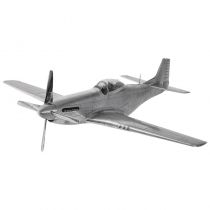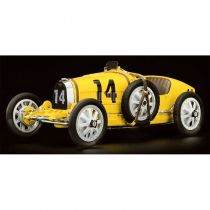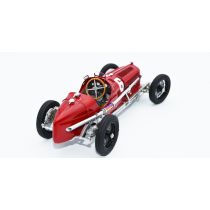Cart is empty
Ferrari launched the 275 GTB/C on a unique chassis designed by Mauro Forghieri for the 1966 racing season. Known as the Tipo 590A, this chassis was lighter and stronger than that of the road-legal 275 GTB. A total of twelve 275 GTB/C Berlinettas were built by Ferrari‘s racing department at Maranello, each featuring a relatively voluptuous styling characteristic of Pinin Farina’s designs of the period as well as a body crafted by Scaglietti. The GTB/Cs were equally at home on the street and track – hot-tempered as any thoroughbred racing car of the time and yet completely user-friendly for the open road.
Although the 275 GTB/C superficially resembled the road-legal 275 GTB, no body panel was the same, and underneath, very little remained identical. The wheel arches are flared to make room for racing tires, making the body of the GTB/C wider than a regular production GTB, particularly at the rear, where the fenders widen behind the doors. The alloy body is paper-thin, made of 0.7 mm thick aluminum sheet, which is only half as thick as that of a GTB. To reduce weight further, the windows and rear screen were made of Perspex instead of glass.
Eight of the twelve GTB/C are left-hand drive, and this car or chassis 09015 is one of them.
To integrate the gearbox with the rear axle, Ferrari used the transaxle with needle bearings
for the first time. There is no fan; natural air intake, along with a water cooler mounted behind a massive oil cooler, serves to keep everything cool even in long-distance conditions.
Dry sump lubrication allows the engine to sit lower and further forward for better weight
distribution. Power comes from a 3.3-liter V-12 engine with 250 LM-type valves, special pistons, and 3 Weber 40 DF13 carburetors, generating 280 hp at 7,600 rpm. Many engine parts are cast from electron, a lightweight magnesium alloy.
The interior of the 275 GTB/C is equipped with rear braces, and the rear area is reinforced to prevent it from flexing in the event of an impact. With an impressive racing record over the decades, the 275 GTB/C is remembred and honored as one of Ferrari‘s last true allround racers. For many Ferrari enthusiasts, the 275 GTB/C shares the same characteristics that have made the GTO such a coveted item. In fact, GTB/Cs are basically considered 250 GTOs for 1966, and as such, are extremely sought-after.
Model Description
• Hand-assembled metal precision model consisting of 781 parts
• Authentic and true to scale shaped body
• Hinged bonnet with self-locking holder
• Twelve-cylinder V-engine with wiring/ cabling
• Originally styled dashboard with all round instruments and controls
• Screwable Borrani central locks with right / left thread
• Detailed ventilation slots on the front fenders
• Tank filler neck with opening cap in the trunk
• Functional doors with openable corner windows
• Race-like design of the vehicle interior with racing equipment, such as roll bars
and seat belts
• Leather-padded bucket seats and the rest of the interior covered with fine leather
• Authentically reproduced Nardi 3-spoke steering wheel in wood look
• Removable spare wheel in the trunk
• Functional independent suspension on wishbones made of metal on all four wheels
• Consistent replica of the exhaust system on both sides with chrome-plated metal tailpipes
• Movable flap for oil filler neck on the front right fender
Technical Data of the Original Vehicle
• Aluminum body over tubular steel frame
• 12-cylinder-60°-V-engine. One overhead camshaft per cylinder bank, chain-driven
• Dry sump lubrication
• Mixture preparation with 3 Weber carburettors
• Ignition with two coils and one spark per cylinder
• Bore x stroke: 77 x 58.8 mm
• Displacement: 3286 cm3
• Power: 290 hp at 7600 rpm
• Top speed: 275 km/h
• Acceleration 0-100 km / h: 4.9 s
• Wheelbase: 2400 mm
• Track width f/r: 1377/1393 mm
• Total length: 4370 mm
• Total width: 1725 mm
• Total height: 1245 mm
• Empty weight: 1100 kg
• Seats: 2





















